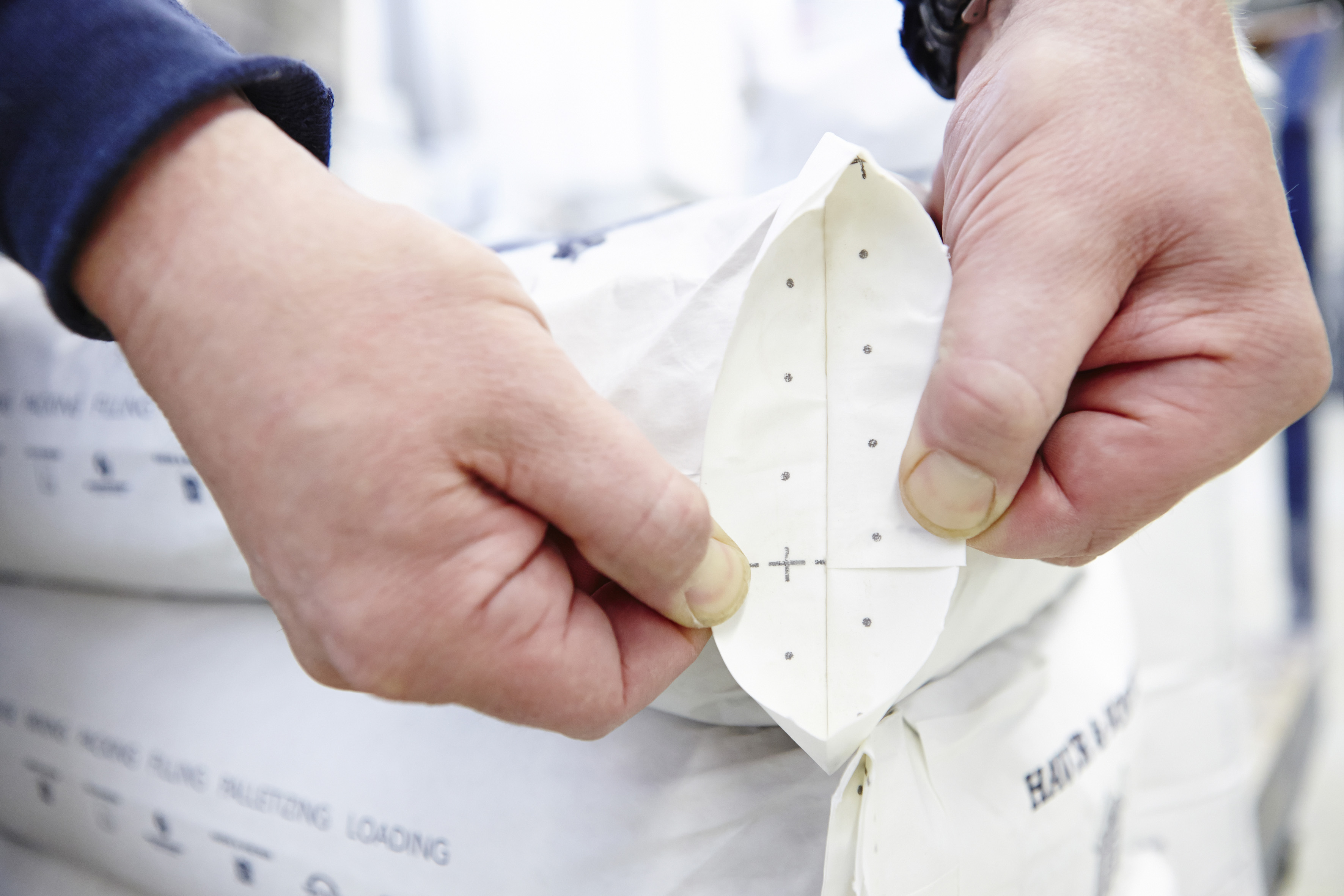“In recent years, producers of sack kraft paper, paper sacks and filling machines have contributed many developments and innovations that have made paper sacks into a form of packaging that performs very well,” states Thomas Hilling, General Manager of the Haver & Boecker R&D centre. “This is true in terms of a fast filling process, strong product protection and low total costs.”
Developments from the sack kraft paper and paper sack industry
Over the last 20 years, the strength of sack kraft paper has been improved considerably and its natural porosity has been increased by almost 30% without making mechanical perforations. This enables easy venting during the filling process and allows high-speed filling. By increasing the de-aeration of paper sacks, converters have optimised this process even further. Together with more sophisticated sack constructions and enhanced quality management from the paper sack manufacturers’ side, this has a positive impact on product protection, shelf life and the filling process.
Smart machines enable smooth processes
Inventions by manufacturers of paper sack filling machines add even more benefits for end-users and fillers. Intelligent computerised technologies result in improved output numbers and in smoother filling processes as well. “Modern filling machines are fully automated,” explains Hilling. “The smart systems detect any changes in the behaviour of the product during the filling process and automatically adapt the product’s fluidisation or the machine’s filling speed.” When switching to a different product, sack type, sack quality or size, the filler only needs to change the corresponding parameter in the software.
Ultrasonic sealing: a small innovation with a high impact
Ultrasonic sealing technology is one example that has a particularly high impact on process efficiency and product protection. It can be used for valve sacks which are equipped with a short outside valve and a sealable coating on the inner valve. By transforming the net voltage into high mechanical movements of 20,000 Hz, the filling machine creates friction inside the valve. This rapid movement has two effects. Firstly, product particles that remained inside the valve after the filling of the sack are sprayed away, out of the sealing area. The zone is clean. Secondly, due to the high friction created inside the valve, the coating on its inner layers melts. When the ultrasonic closing head presses them together, the valve is welded. This process only takes one second and results in absolutely tightly sealed and clean sacks.
Benefits for the supply chain
“There are many advantages to ultrasonic sealing,” says Hilling. “As no external heat is needed for this process, neither the sack nor the filling goods are affected by thermal energy.” Thanks to the self-cleaning effect of the weld zone, no subsequent cleaning processes are required. The additional costs for the sealing technology are largely offset by savings relating to plant parts such as spillage and dust collection systems as well as cleaning sets. Improved cleanliness at the filling site leads to lower wear of plant parts and reduced maintenance costs. Since less cleaning and dedusting equipment is needed, energy costs are reduced as well. Employees benefit from better health and safety conditions due to decreased dust formation at the site. Moreover, the weight of the sacks is more accurate because no uncontrolled loss of material occurs during filling or transportation. Clean sacks convey a positive image. Prints appear brighter than on dusty sacks. Also, the tight seal offers better product protection and prolongs the shelf life of the sacks as no foreign particles or animals can enter the sack and contaminate the product. “All in all, the filler and the end-customer benefit hugely from the ultrasonic sealing of paper sacks,” summarises Hilling.
Dust-free paper sacks becoming standard in Europe
“Worldwide, there are about five to six thousand sealing units in use,” estimates Hilling. “In Europe, ultrasonic sealing has almost become standard.” Segments with the highest implementation of ultrasonic sealing are food and feed (100%), chemicals (95–98%), building materials (80–85%) and minerals (50–60%).



